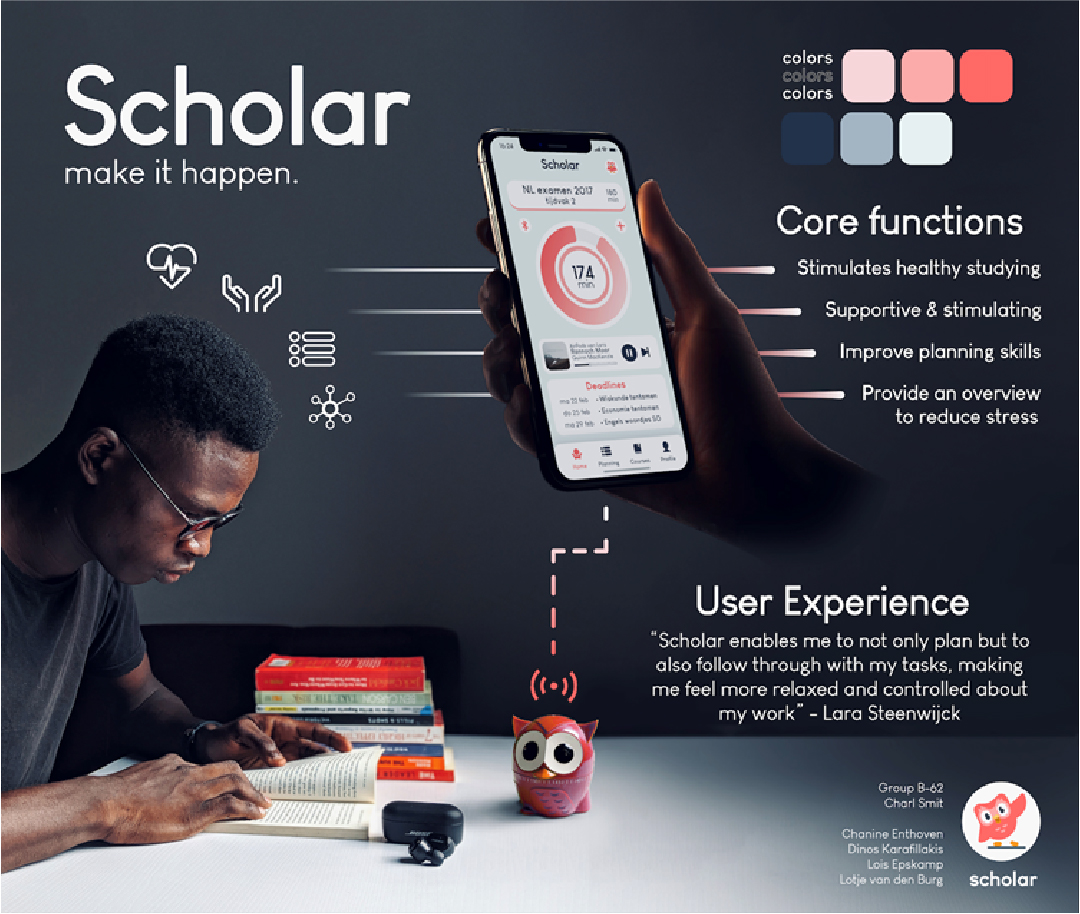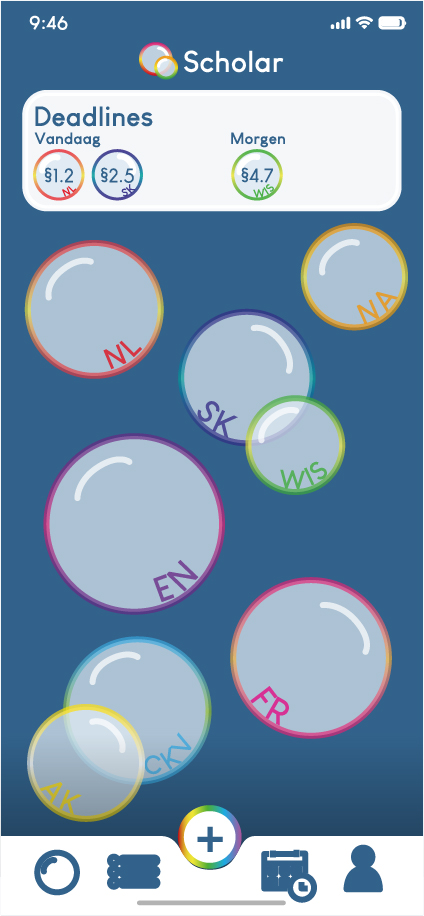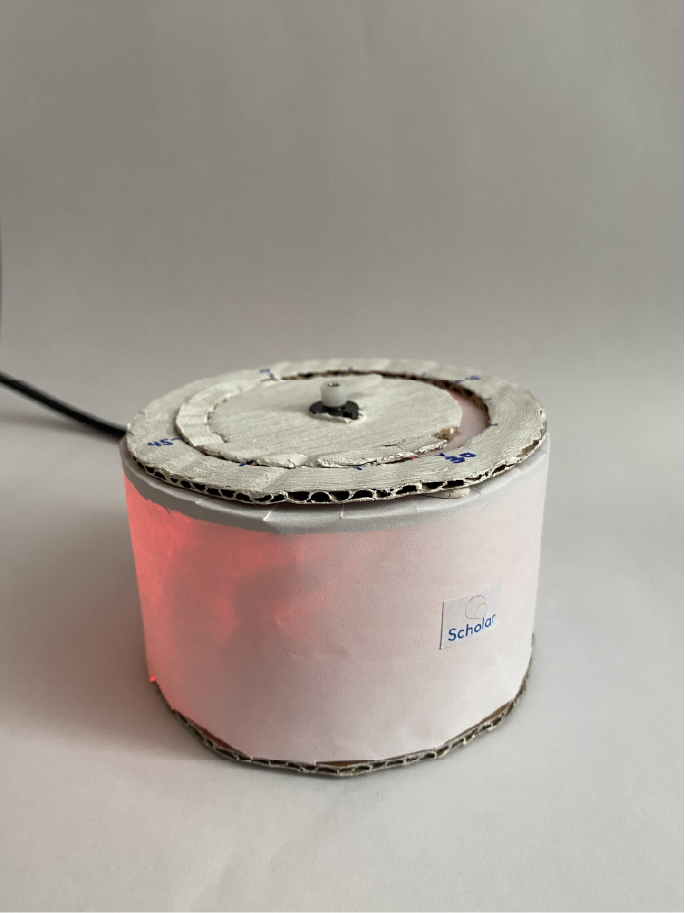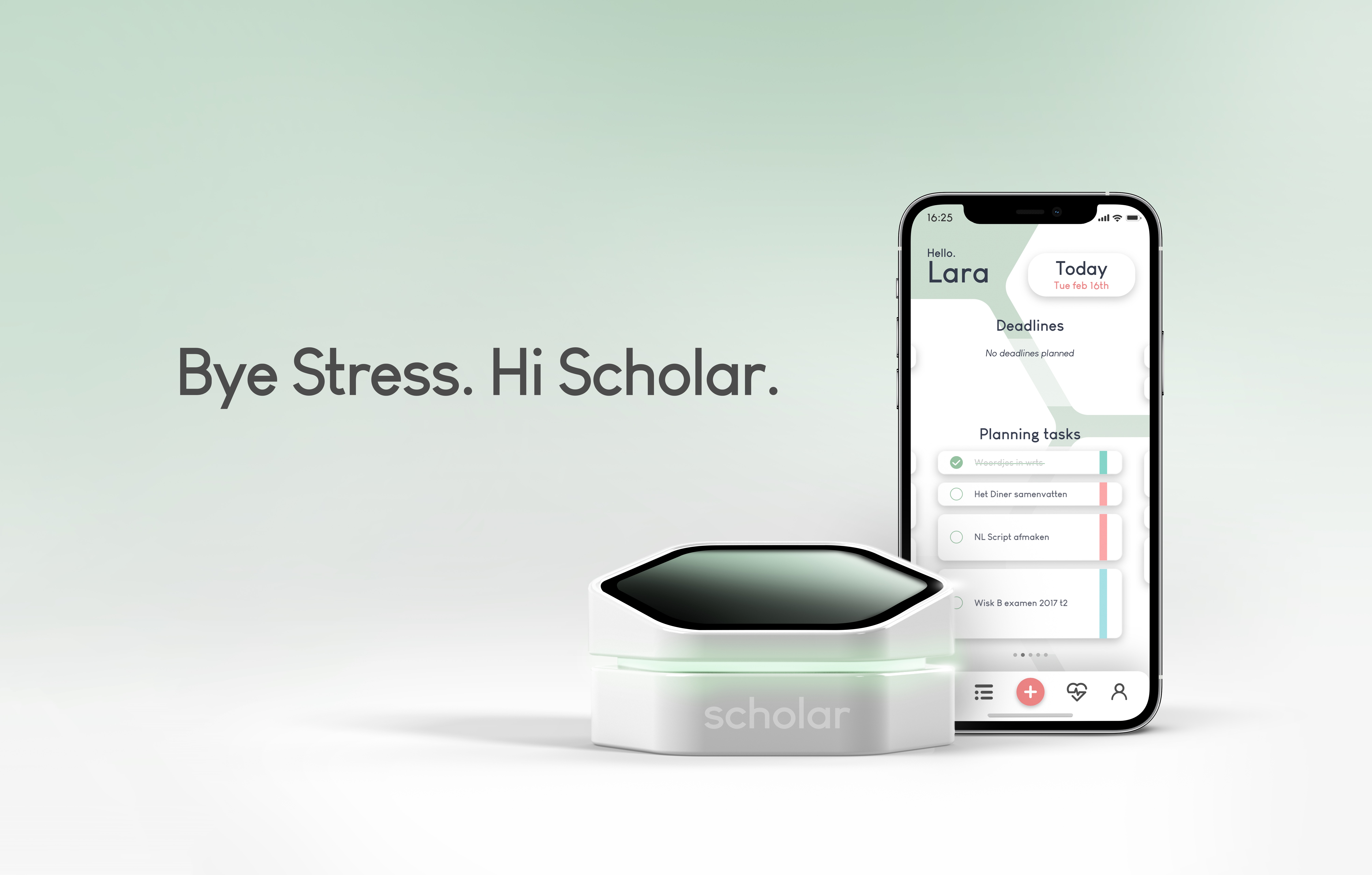SCHOLAR
Planning and keeping track of your planning is difficult. Especially for high school students, where you are newly exposed to this. This could stress pupils out unnecessarily. Scholar is a Personal Health Information (PHI) system that reduces stress and stimulates healthy study behaviour amongst high school students. It will help students which struggle with planning and keeping track of their homework. It can be used whilst studying in the student's working environment.
Bye stress, hi Scholar.
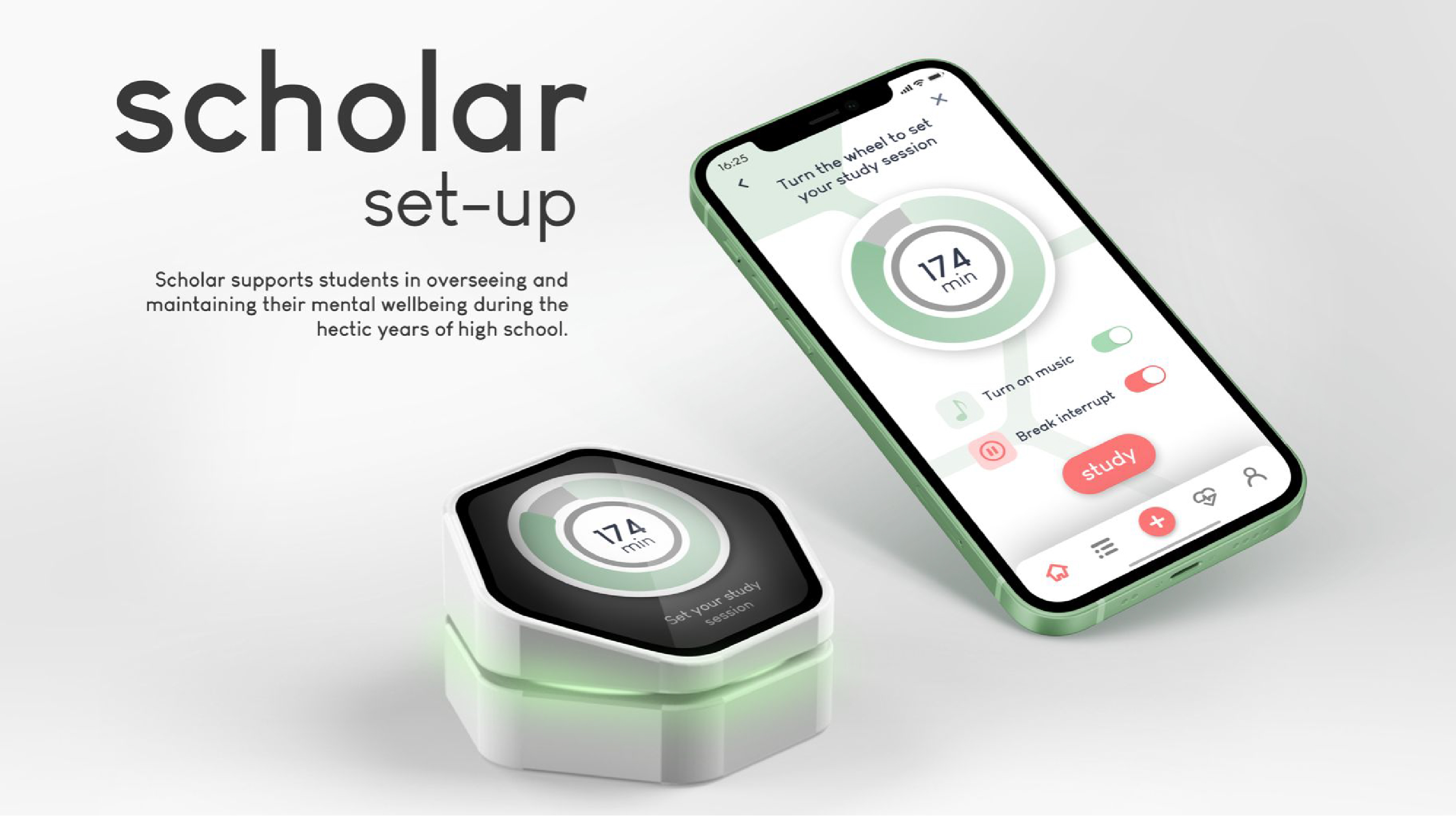
Vision
Scholar provides an overview to reduce stress by seeing at a glance what to do's there are for a day and showing a clear overview of tasks & deadlines.
It stimulates an efficient study routine by facilitating planning that is achievable and easy to follow. Scholar stimulates a healthy balance between study and breaks based on research studies.
Scholar helps you to stay motivated. It is goal-oriented by granting insights into progress and providing feedback on study routines. The PHI system is supporting you to stay focused on deadlines.
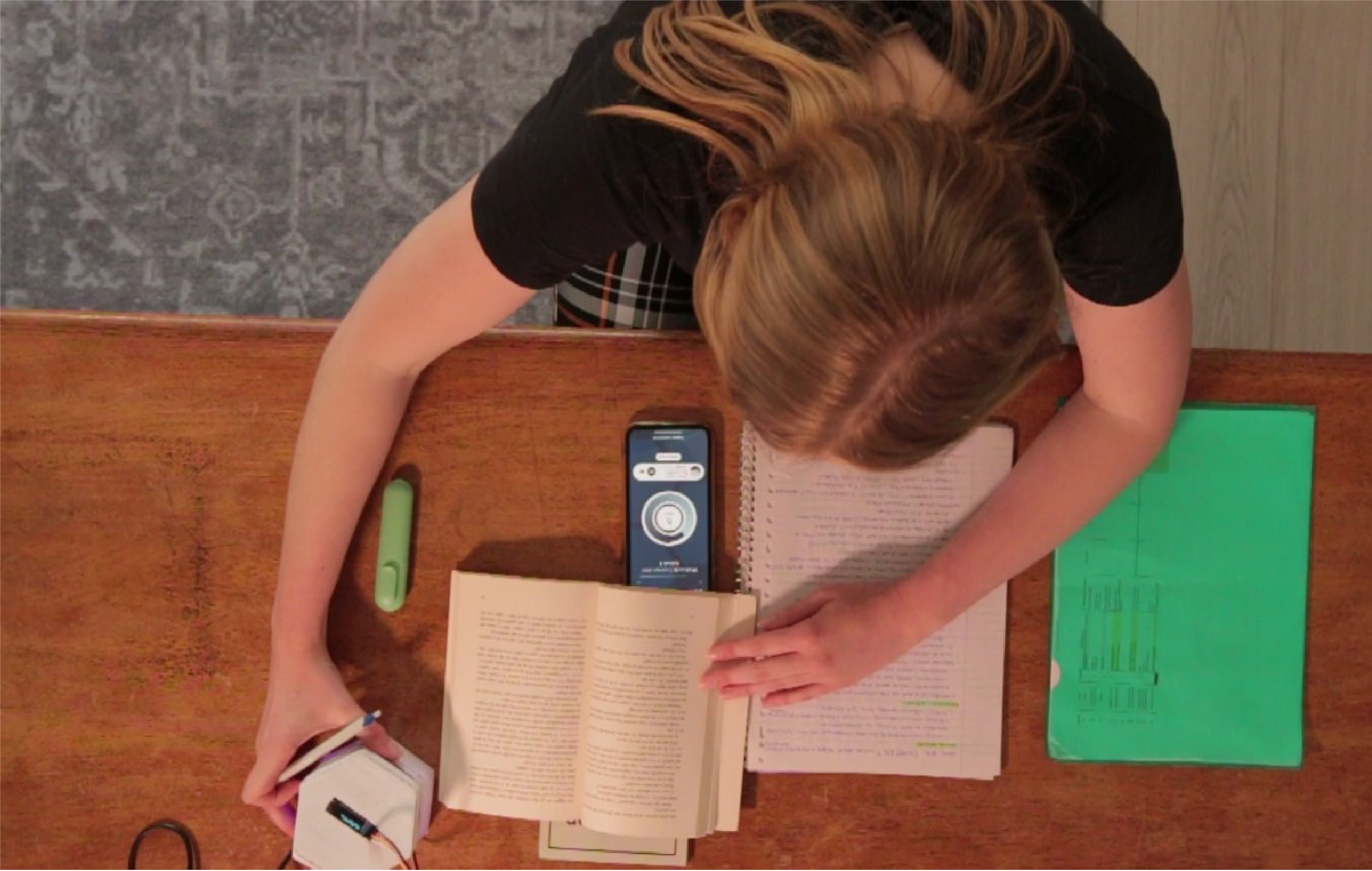
Scholar in detail
Scholar consists of an app and device. It is used by peers to plan and complete homework tasks at home. In the Scholar app, you can add tasks and deadlines at all times. Via a smart AI planner, these tasks will be planned. Once you get home from school, you can open the app and see what you can study today. You choose a task, set the time, and start studying. A screen lock will appear on your phone and the device will lead you through your study session, the AI senses and recommends the user to take breaks which are calculated to as 33% of the total study time (Thompson, 2014), resulting in maximal productivity. At the end of the study session, you can complete your task and have insight into your productivity.
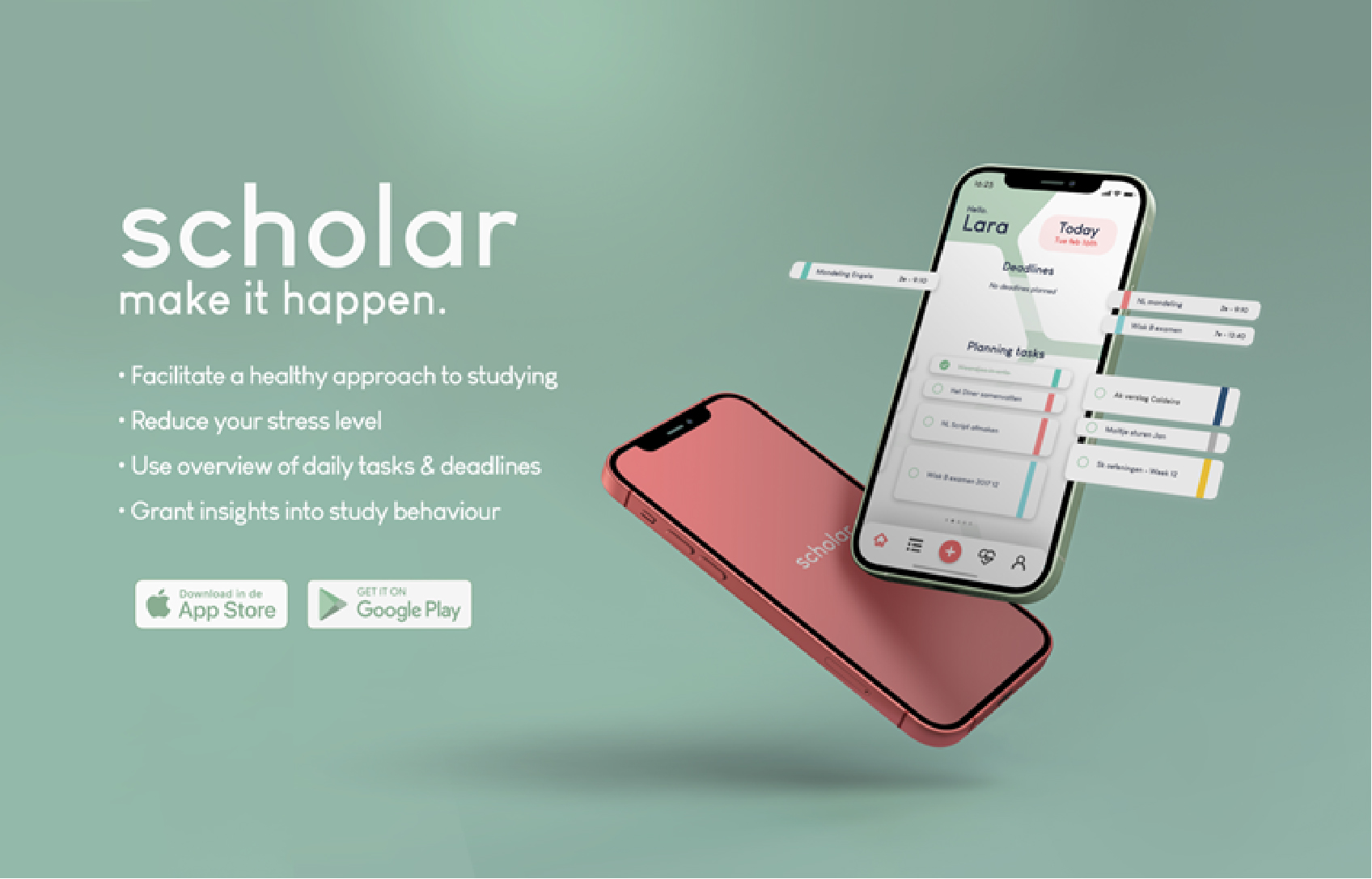
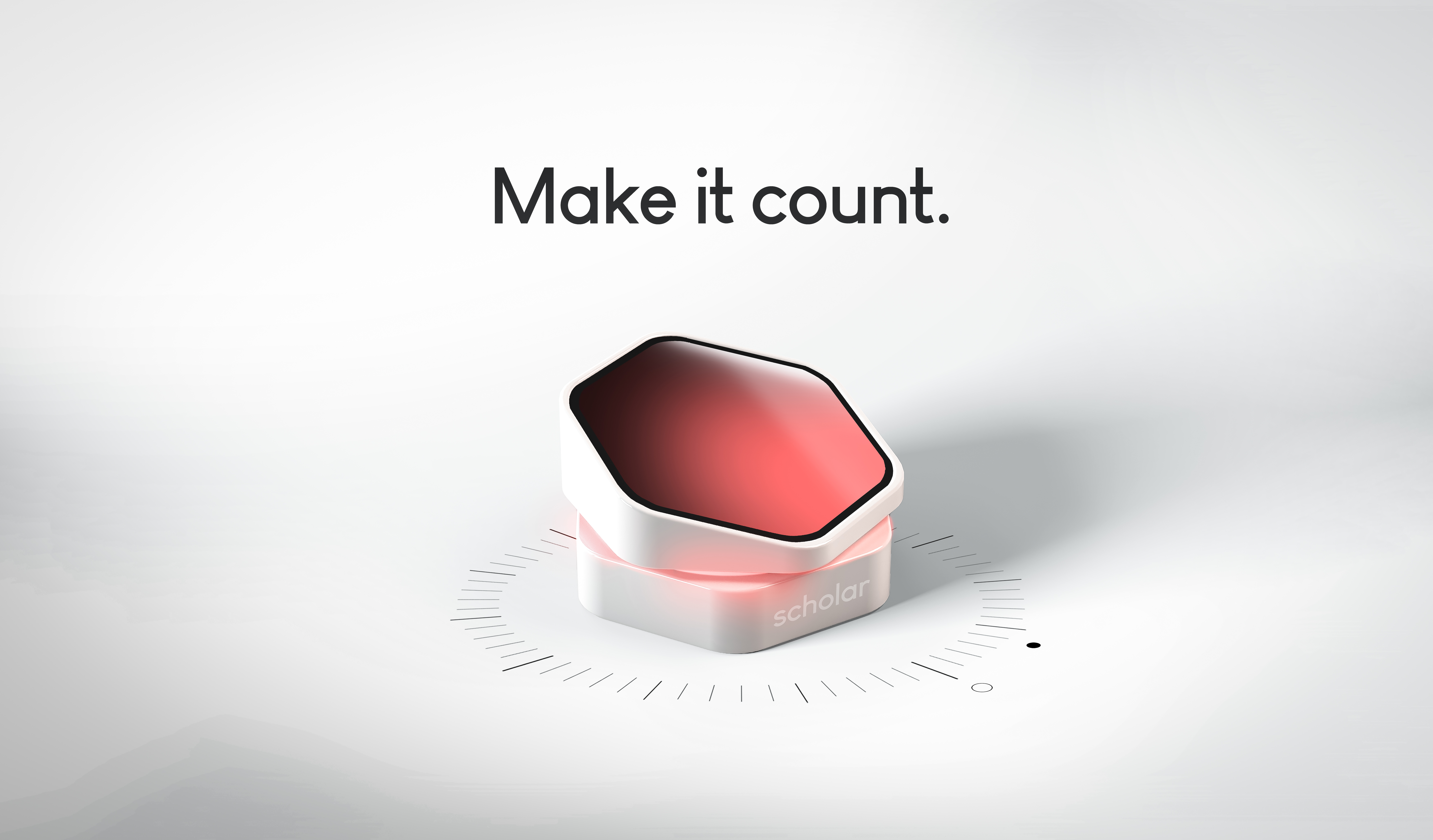
Scholar the process
Creating Scholar started with a team consisting of Chanine Enthoven, Lotje van den Burg, Dinos Karafillakis, and I. It was realised within 30 days over the span of ten weeks. First, we decided on a target group, user research plan, and context of use via a brainstorm. Based on multiple interviews with the target group, we set up two personas, one of a girl in the end phase of high school and one of a boy in the beginning stage of high school. Then a first interaction scenario, UX vision, user task flow, and active machine diagram were made. This was the ground for the first app design we made.
As we had a large target group because a 12-year-old is a world of difference compared to an 18-year-old, we separated to work individually on a detailed version of the app and device. We all focused on another age group and part of the vision of Scholar. Afterward, we reconvened and shared our designs. We combined the strong points of each design to create one app and device which fits all parts of the target group. We tested this design again with five children ranging from eleven to eighteen years old. The results were processed and led to a new iteration. And then it was there: By stress, Hi Scholar.
